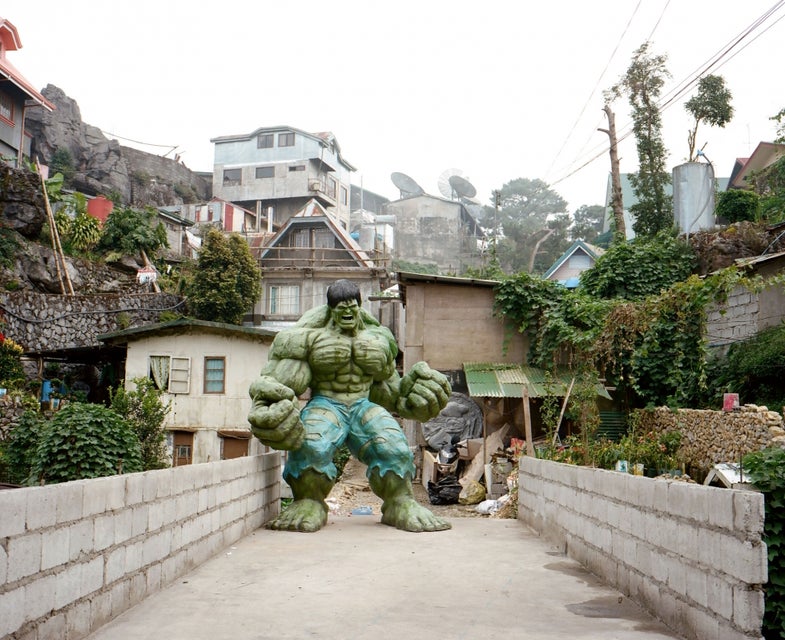Remembrance of Things Never Known: Examining the Inner Workings of Tumblr
We’re now a few months on from Tumblr’s acquisition by Yahoo!. While a few changes have shown up in the...

We’re now a few months on from Tumblr’s acquisition by Yahoo!. While a few changes have shown up in the service, it continues to function as one of the largest engine rooms of the internet’s vast content-circulating apparatus. Many of us feed words and pictures into this machine, but what does it produce? For the last year and a half, I’ve tried to investigate this question in my column “Behind the Notes,” which consists of interviews with photographers who’ve had their photos go viral on Tumblr.
The project started when I posted a friend’s photograph to my own Tumblr before going to bed, and woke up to find that it had accumulated 3,000 notes (a cumulative count of likes and reblogs). I was curious to know more about why certain photos bounce around Tumblr, and more importantly, whether this activity impacts the photographers in real life. The idea of “Behind the Notes” was simple: find photographs that were popular on Tumblr, then ask the photographers whether anything had come from this experience.
There was nothing scientific about this study, but I would tentatively suggest that nostalgia is a major factor in Tumblr popularity, and that its benefits to photographers do not lie in viral success. But bet’s look a little closer.
After a making a few posts in the series, it seemed like 10,000 notes would be a good cutoff point. I was only interested in images that seemed out of place in this rarified Tumblr air, which, to be a bit cynical, involves some combination of Nikes, weed or partial female nudity. What is a photograph of a bookshelf or a rather plain unmade bed doing there? Each time I profiled an image, I would take a screenshot of a couple of places it had been reblogged, in order to get some sort of idea of the context in which the image was now appearing. This often led to somewhat strange combinations, like a photograph of 80s skater kids showing up next to a big cupcake. Apart from such cheap thrills, looking through dozens of Tumblrs at a time was an educational experience, in the sense that it educated me about the way that Tumblr users interact with content. I was fascinated to find an entire blog devoted to photographs of boats and oceans, and another which showed photos of the White Stripes—and Bay Area highways. Whatever you’re into, there’s a Tumblr for that.

An ocean-only Tumblr (now deleted)
Of course there are literary circles, music circles and “serious photo” circles on Tumblr, but to hit 10,000 notes, you need to reach teens. The link between these collections is a longing for objects or experiences: in short, a nostalgia, especially for something unremembered. Every image that I wrote about was endlessly blogged and reblogged by teenagers, and looking through the most recent notes on a photo I was “studying,” I could often see what country’s teens were reblogging it at that time. To be really successful, an image needs a certain vacantness, so that the viewer can meet it halfway, and “fill in” something of their own. One Tumblr user even takes images (like Joachim Robert’s Paris cityscape) and adds quotes to them.

Valerio Loi’s vials, which could have been made into energy drinks
I found that very few photographers had received any personal contact as a result of their Tumblr success. Still, when an image gets above 50,000 notes, it is clearly being shown to at least a few hundred thousand people, if not more. A photo of a smoking grandma that we posted on the American Photo Tumblr a year ago is still generating lots of reblogs. By now it’s almost reached 90,000 notes, and it’s not far-fetched to think that more than a million people have seen it. In that sense, it’s somewhat surprising that photographers received such little personal response. Over the course of 12 columns, I only heard of one meaningful commercial inquiry, a bizarre proposal to make a line of energy drinks based on vials that Valerio Loi had made and photographed. He didn’t take up the offer.
Of course, exposure on Tumblr can certainly help photographers to build up a fanbase—David Brandon Geeting seems to have done this very well—but perhaps there is just not much value in a single burst of popularity. At the 10,000 note level, images are being passed around for their emotional effect rather than an artistic expression. The frequency with which some users post images can be shocking; this is one normal way of consumption online, though. I don’t believe that Tumblr has fundamentally changed the way that we want to see things, but rather allowed these desires to be expressed clearly.
As many others have complained, lost in all of this is the idea of the “author.” I understand that complains of photographers who have had their name erased from their own work. The Tumblr users who are removing author information are doing it unconsciously, and this indifference might show that what the photographers see as their work, the users see as raw material. Still, I highly recommend that anyone harboring skepticism (if not ill will!) towards Tumblr take a look at the words of 14-year-old Sunanda Carmela. Despite being the youngest out of any photographer I talked to, Sunanda was the most philosophical about Tumblr and its relationship to photographers:
“I think this photo catered to the vintage-hipster blogs of Tumblr. Most, if not all photos in this blog style are taken with a film camera, or better yet a disposable one (which I used to take this photo). For most of these blogs it’s not necessarily about the picture itself but about how all the pictures will look next to each other on the actual blog page. After being on Tumblr for a little over a year and half now, I’ve found that people don’t really care THAT much about who took the photo; they just want to see a nice photo. That’s why I’m not really surprised that no one contacted me on a personal level.”
Personally, I’m glad to have heard Sunanda’s words, and it gives me no small measure of hope that the youngest person I interviewed had the clearest insight into the medium. Perhaps we should give Tumblr teens more credit after all.

Kids Playing